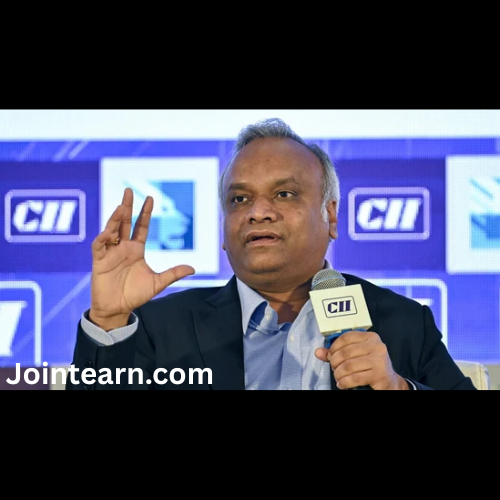Campaigning for the 2025 Bihar assembly elections has entered an increasingly charged phase, with leaders using sharper rhetoric and symbolic gestures to push their narratives across a politically crucial state. Prime Minister Narendra Modi, addressing a public rally in Sitamarhi ahead of the second phase of polling, delivered one of his strongest attacks on the Opposition, particularly Congress leader Rahul Gandhi. Though he did not mention Gandhi by name, the reference was unmistakable: the Prime Minister mocked the Congress leader’s widely circulated dive into a pond during an outreach event with fishermen in Begusarai.
The Prime Minister told the crowd that “bade bade log” have started coming to Bihar and jumping into ponds to catch fish, a remark clearly aimed at the viral video of Gandhi entering a chest-deep muddy pond alongside local fishermen. Modi framed the act as a political gimmick rather than genuine social engagement, saying, “Bade bade log bhi yahan ki macchli dekhne aa rahe hain. Paani mein dubki laga rahe hain… Bihar ke election mein doobne ki practice kar rahe hain.” The jab drew loud reactions from the audience and quickly circulated online as part of the escalating back-and-forth between the ruling NDA and the Opposition.
Rahul Gandhi’s dive had been intended as a direct engagement with the Nishad and Mallah communities—key fishing groups in Bihar’s social structure. Accompanied by former state minister Mukesh Sahni, Gandhi took a boat to the middle of a pond in Begusarai before plunging in, interacting with fishermen and attempting to cast a net. Congress leader Kanhaiya Kumar and several male members of the local fishing community joined him in the water. The Congress camp portrayed the moment as evidence of Gandhi’s willingness to meet people “on their turf,” a contrast to the rhetorical attacks of the BJP. Videos of the event were widely circulated on social media, drawing both praise and scepticism depending on political affiliation.
Modi, however, treated the incident as an opportunity to underline what he framed as the Opposition’s desperation in the face of an NDA that, according to him, enjoys stable support. The Prime Minister repeatedly emphasised that symbolic dives and photo opportunities cannot substitute for governance or a clear development agenda. He positioned his remarks within a broader attack on the RJD-led Opposition, invoking law and order concerns as a longstanding political fault line in Bihar.
During the Sitamarhi rally, Modi sharpened this line of attack by asserting that the Opposition, if returned to power, would revive a culture of intimidation. He referred to reports from the campaign trail in which children were allegedly encouraged to declare desires to become “rangdaar,” a colloquial term for local strongmen known for street-level dominance. Modi said he was disturbed by such statements, warning voters against returning to an era associated with firearms, misrule, and widespread fear. “Bihar definitely does not want a government which has ‘katta’, ‘kushasan’, ‘kroorta’ and corruption to offer,” he said, using four terms that collectively evoke Bihar’s pre-2005 governance challenges.
The katka, or country-made gun, has become a recurring metaphor in the BJP’s campaign to highlight what the party claims would be a regression under the Opposition alliance. The Prime Minister stated that wherever he had travelled in the state—from northern districts near the Nepal border to the central plains and the urban belt—he encountered a strong sentiment in favour of retaining the NDA. “Wherever I go, the prevailing sentiment is: we do not want a ‘katta sarkar’, we want an NDA sarkar again,” he said.
This message is particularly targeted at voters who associate the RJD’s earlier tenure with law and order breakdowns. The Opposition, for its part, has pushed back, arguing that such narratives are exaggerated and that current governance under the NDA has also seen major failures, especially in the delivery of jobs, inflation control, and rural economic support.
The rally in Sitamarhi came just days before the second phase of polling on November 11. During the first phase on November 6, voter turnout stood at approximately 64.69 percent, a figure that has been immediately seized upon by both political camps to discredit the other’s interpretation of public sentiment. The Opposition claims that high turnout signals discontent with the ruling coalition. Jan Suraaj Party founder Prashant Kishor—an influential political strategist whose campaign has generated a powerful grassroots response—argued that rising turnout reflects a “positive movement toward regime change” and a desire among voters for new leadership. His party has been positioning itself as a serious challenger in several constituencies, especially among younger and middle-class voters.
The NDA, however, insists that voter enthusiasm signals the public’s desire to return the alliance to power, particularly after what it portrays as a decade of relative stability under the coalition. Modi’s rally speech reflected an effort to consolidate this narrative by projecting confidence and continuity, painting the Opposition as fragmented and lacking a coherent agenda.
Meanwhile, within the Congress-led alliance, leaders have defended Rahul Gandhi’s foray into the fishing pond as a meaningful expression of solidarity rather than a publicity stunt. They argue that Gandhi’s physical involvement with the fishing community contrasts sharply with what they describe as the NDA’s top-down style of governance. The Congress has also pushed back strongly against the BJP’s rhetorical attacks, with party leaders exchanging heated remarks with their BJP counterparts on social media and in press briefings. The exchange has included the BJP calling Gandhi’s press interactions “laughable” and the Congress responding with sharp retorts such as “chup baith,” reflecting the acrimonious tone of the campaign.
The intensifying rhetoric on all sides highlights the high stakes of the 2025 election, which many analysts believe will be one of the most tightly fought contests in Bihar’s recent political history. A combination of shifting alliances, new political entrants, historical grievances, and targeted community outreach has led to unpredictable voter behaviour in several constituencies. Against this backdrop, symbolic acts—whether a dive into a pond or a series of sharply scripted speeches—carry heightened political significance.
As the campaign enters its later stages, both the ruling coalition and the Opposition appear determined to frame the election not just as a contest over development or welfare but as a battle over the broader identity of Bihar: its political culture, its social cohesion, and the direction in which its electorate wishes to push the state over the next five years. The exchange between Modi and Gandhi, in this context, reflects larger national narratives that have now crystallised in the Bihar arena, making every gesture and every remark a political statement with wide-reaching implications.


Leave a Reply